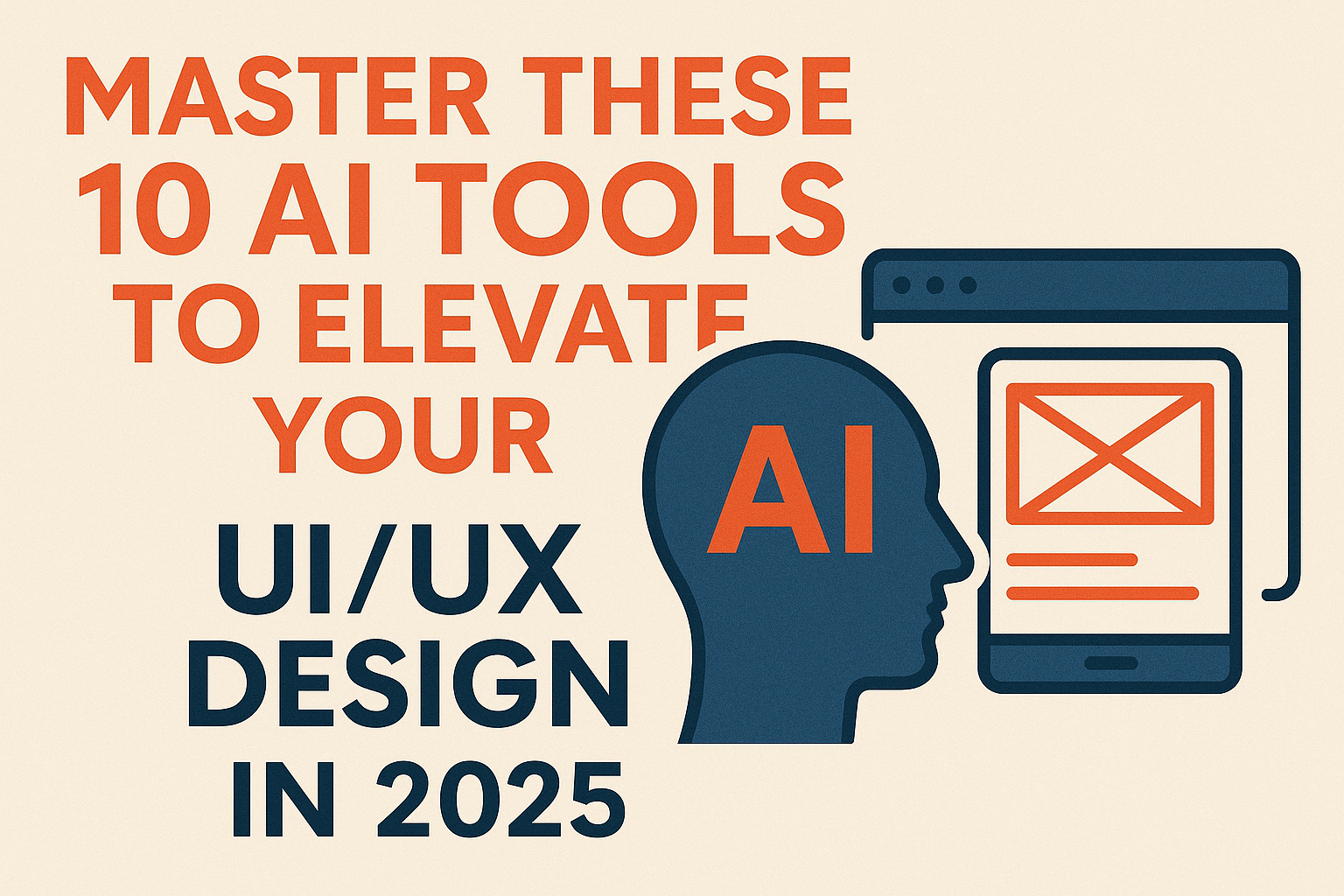As the digital world rapidly evolves, AI is becoming a core part of user experience and interface design. In 2025, the future of interaction design with AI is no longer a distant concept—it’s already here. UI/UX designers are integrating artificial intelligence not just to automate tasks but to enhance creativity, personalization, and efficiency.
If you’re aspiring to become a cutting-edge designer or currently pursuing a UX design course in Noida or a communication design course in Noida, mastering these 10 AI tools can give you a competitive edge.
- Uizard
Uizard turns sketches and hand-drawn wireframes into working digital prototypes. It’s perfect for rapid ideation and helps designers save hours on layout planning. This tool exemplifies how UX designers using AI tools can streamline their workflow.
- Figma with AI Plugins (Magician, DesignerBot)
Figma continues to dominate the design space, and with AI plugins like Magician and DesignerBot, designers can auto-generate design components, copy, and animations. It represents the AI trends in UX and communication design—especially in collaborative environments.
- Adobe Sensei
Part of Adobe’s creative suite, Sensei offers automated insights, smart object selection, and content-aware layout features. It’s helping redefine the future of interaction design with AI, making it intuitive and responsive.
- Galileo AI
This tool generates polished UI designs based on text prompts. It’s useful for UI/UX designers who need to rapidly generate design ideas or concept prototypes—no more starting from scratch.
- Khroma
Khroma uses AI to learn your favorite color combinations and helps you generate countless palette options. Ideal for designers working on brand identity or communication design projects, especially when inspiration runs low.
- Fronty
Fronty converts images or mockups into HTML/CSS code using AI. A must-know tool for UI designers who want to bridge the gap between design and development.
- Runway ML
Though originally created for video and image editing, Runway ML allows UI/UX designers to create stunning visuals and motion content using generative AI—ideal for immersive UX and communication design experiences.
- Copy.ai
Content plays a vital role in UX. Copy.ai helps generate website copy, product descriptions, and micro-copy for buttons or alerts, tailored to user behavior and tone.
- FigJam with AI Integration
Figma’s whiteboard tool, FigJam, now comes with AI enhancements for generating sticky notes, summarizing user research, and organizing workflows. This is highly valuable for design students, especially those enrolled in a UX design course in Noida, as it makes collaboration and ideation more intuitive.
- Maze AI
Maze is an AI-powered user testing platform that offers quick usability insights. It allows UX designers to make evidence-based design decisions without needing extensive resources or a full QA team.
Why These Tools Matter in 2025
The AI trends in UX and communication design point toward a future where designers are co-creating with intelligent systems. These tools reduce manual work, assist with decision-making, and open up new creative possibilities. More importantly, they support an ethical and user-centric approach, where AI is used to personalize rather than manipulate.
As companies move toward smart interfaces, voice interactions, and AR/VR-driven UI, the future of interaction design with AI will depend on how well designers adapt to these tools—not just technically, but also strategically.
Preparing for the Future
If you’re a student or aspiring designer, enrolling in a communication design course in Noida or a UX design course in Noida can provide foundational knowledge. However, supplementing that education with AI tool proficiency will make you future-ready. Many design institutes are now incorporating AI literacy, design ethics, and hands-on tool training as part of their curriculum.
Final Thoughts
The synergy between AI and UX design is no longer optional—it’s essential. Whether you’re a professional or a student, staying updated with these tools will help you create intuitive, inclusive, and impactful digital experiences. Mastering them is not just about improving productivity, but about shaping the future of human-centered design in the age of artificial intelligence.


